Mid-Century Modern Desk
This commission came from clients with a vision: recreate a three-legged, mid-century modern desk design with minimal modifications — in solid walnut. The most notable change from the original design is that this desk is double-sided, allowing the drawers to pull out from either direction. I scaled the piece directly from proposal photographs, matching proportions exactly. The result is a striking desk that would be at home in a fine art gallery.
Design & Planning
Proposed Picture
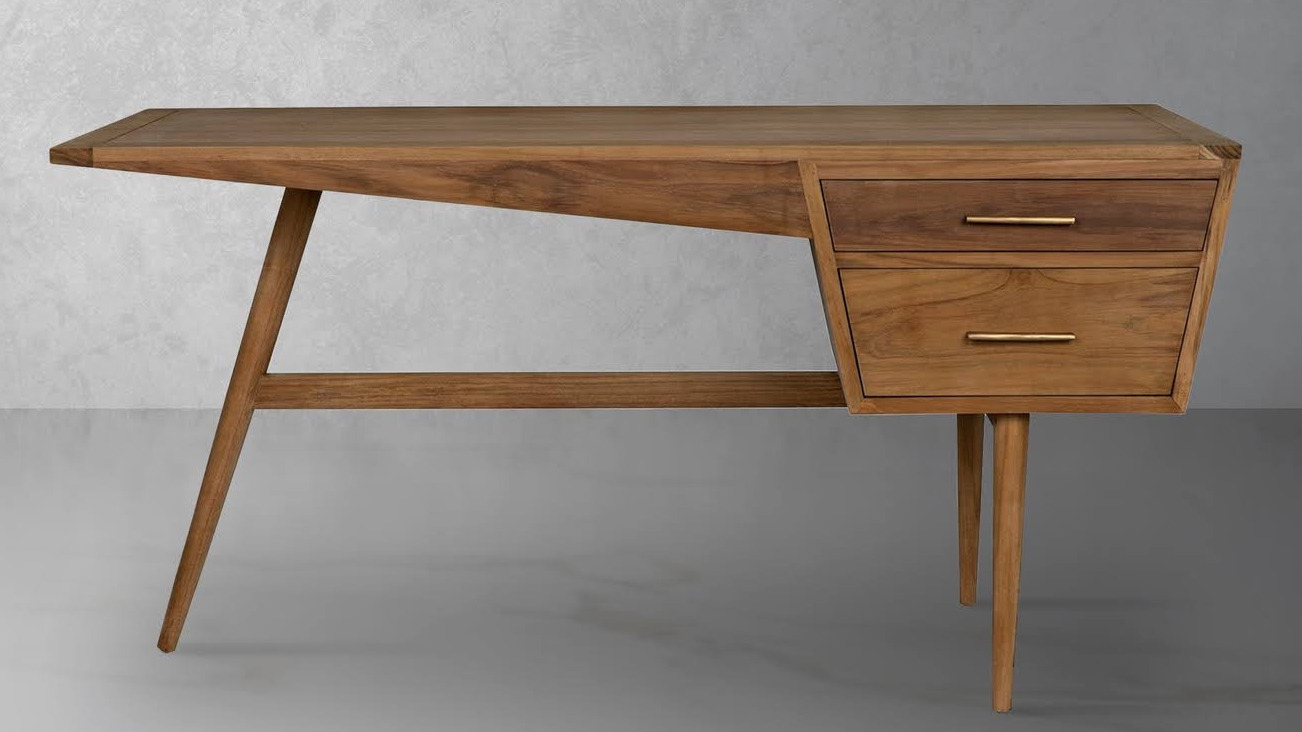
My Result
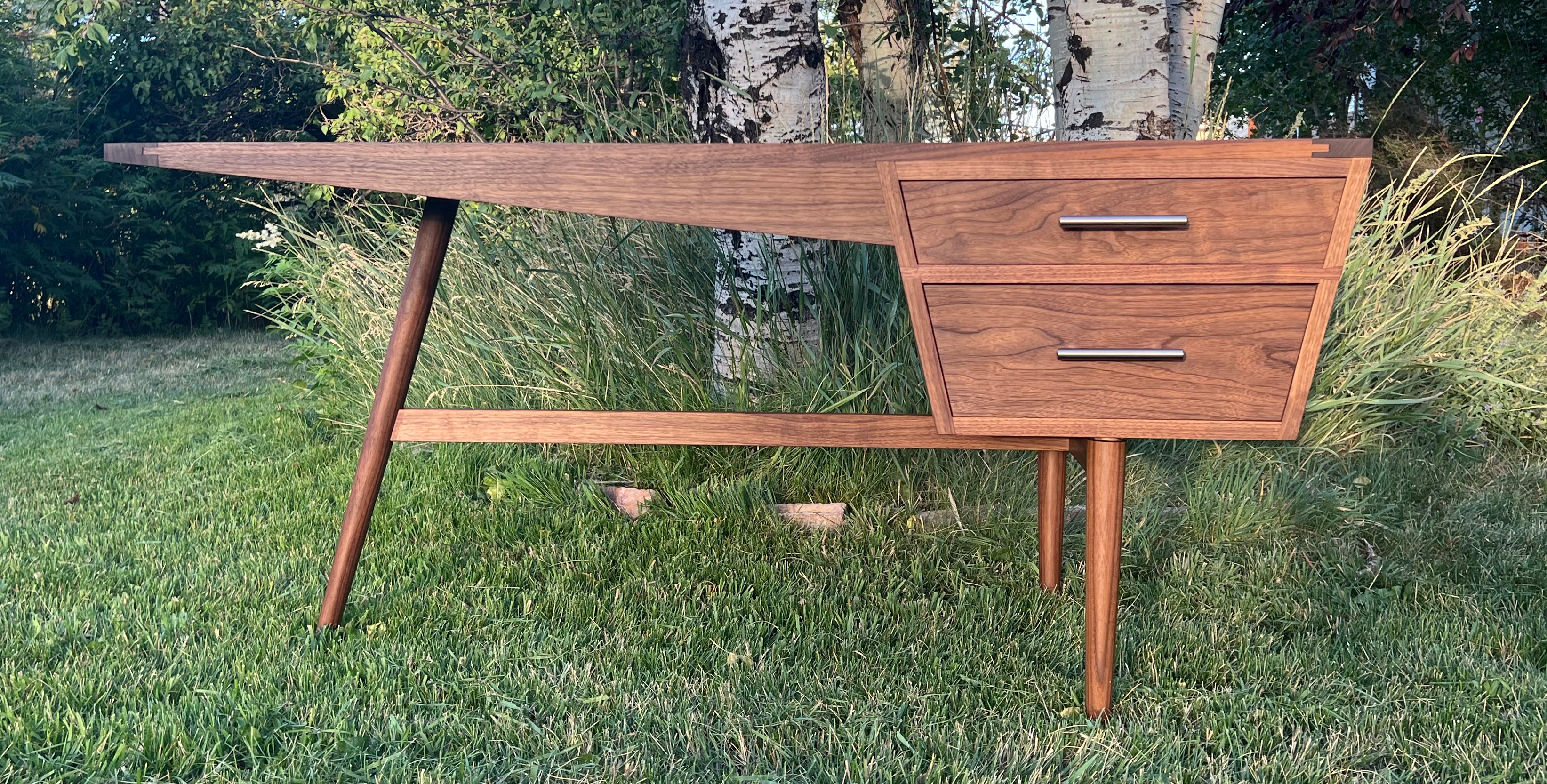
Proposed Picture
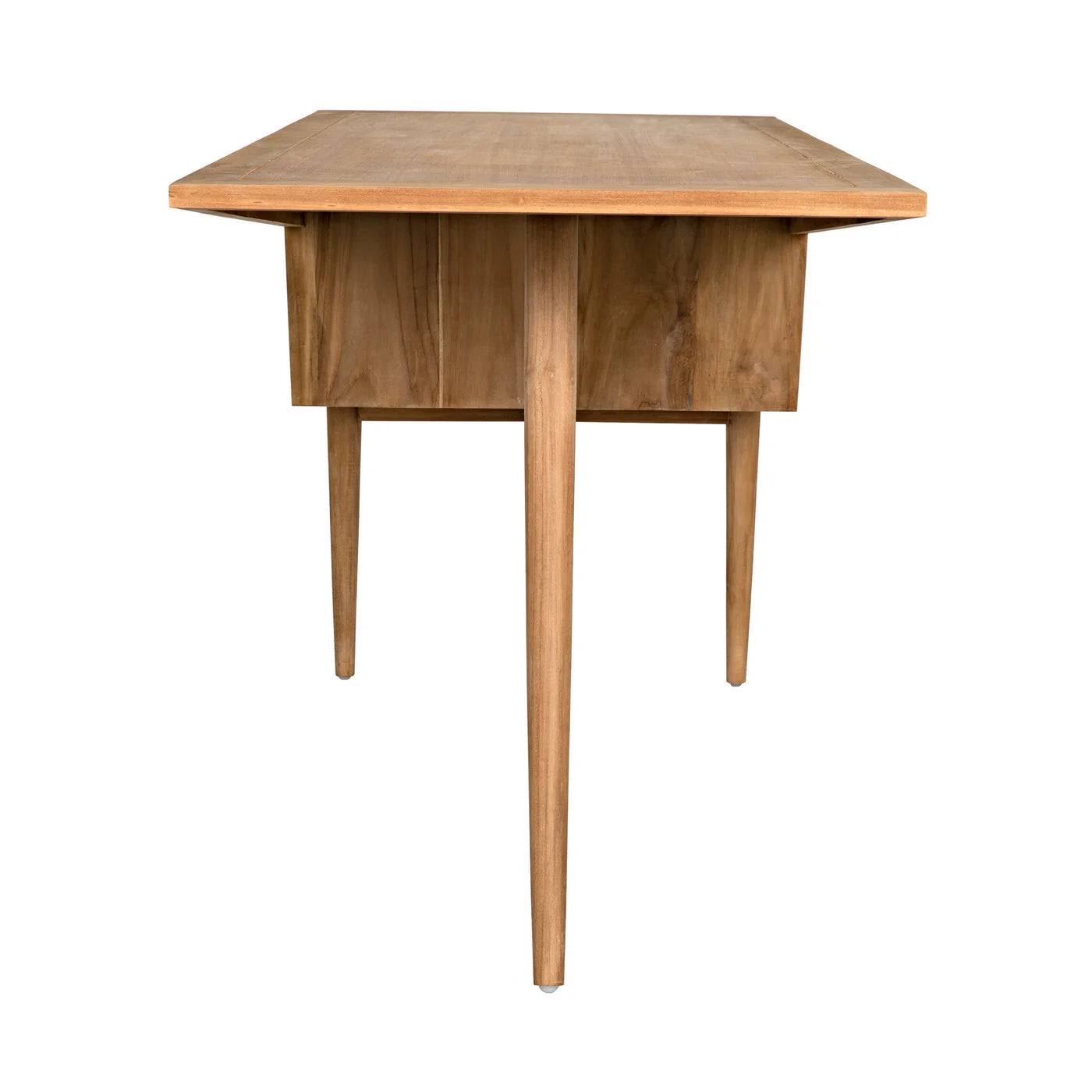
My Result
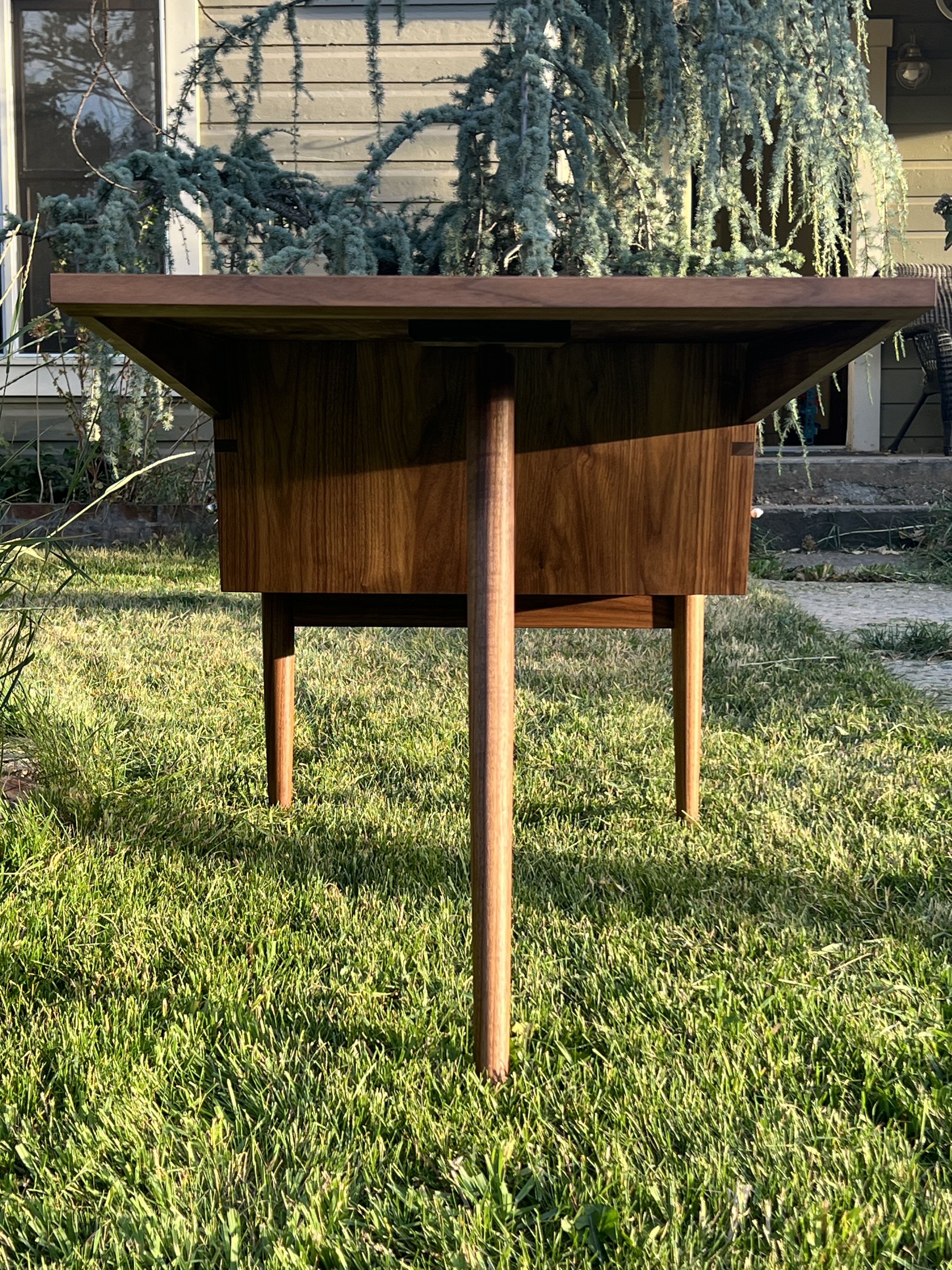
The original design photos served as the blueprint. Careful proportioning and measurement ensured this reproduction retained the original’s elegance while adding my own small details in craftsmanship.
Casework & Glue-Ups
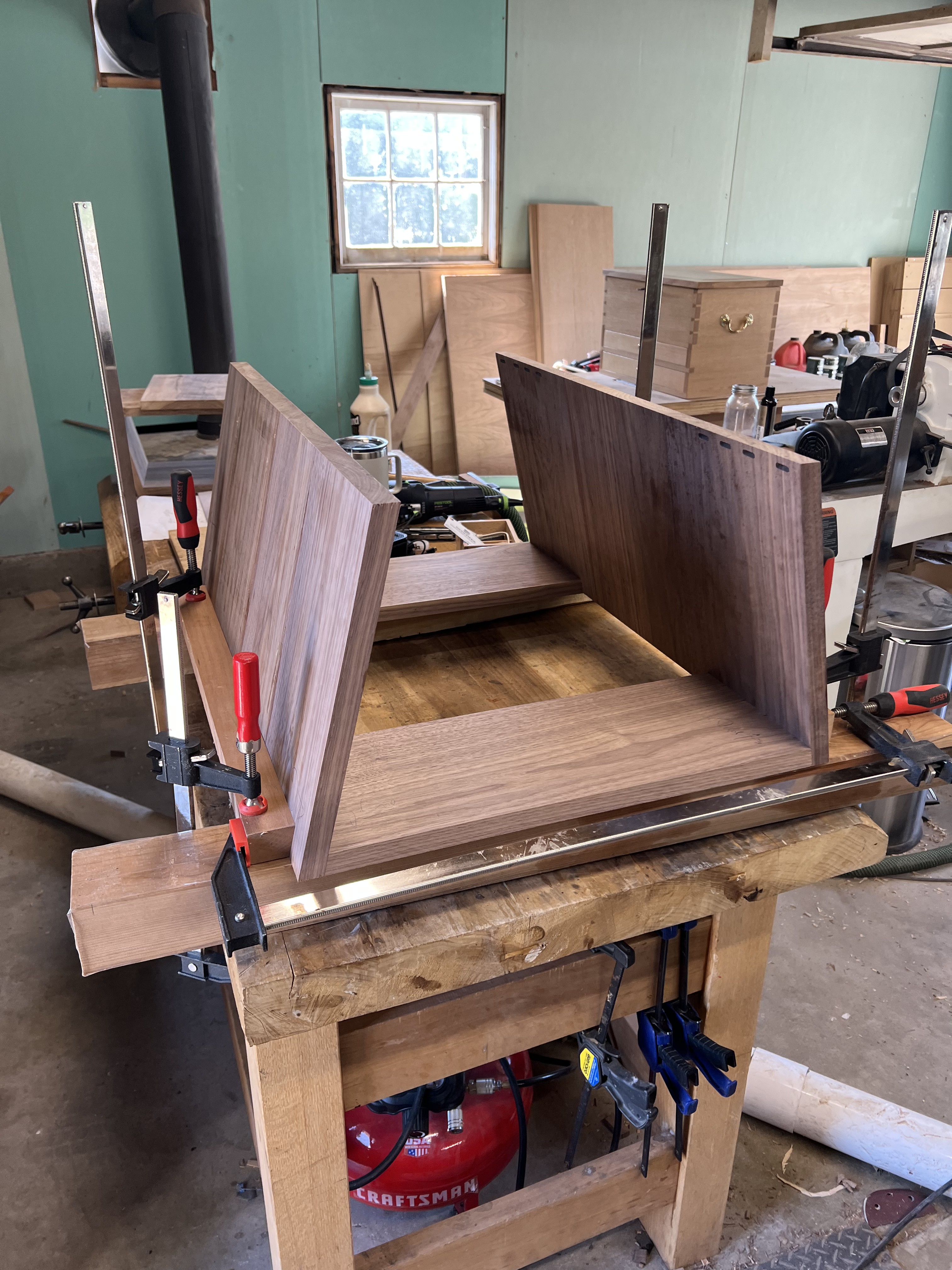

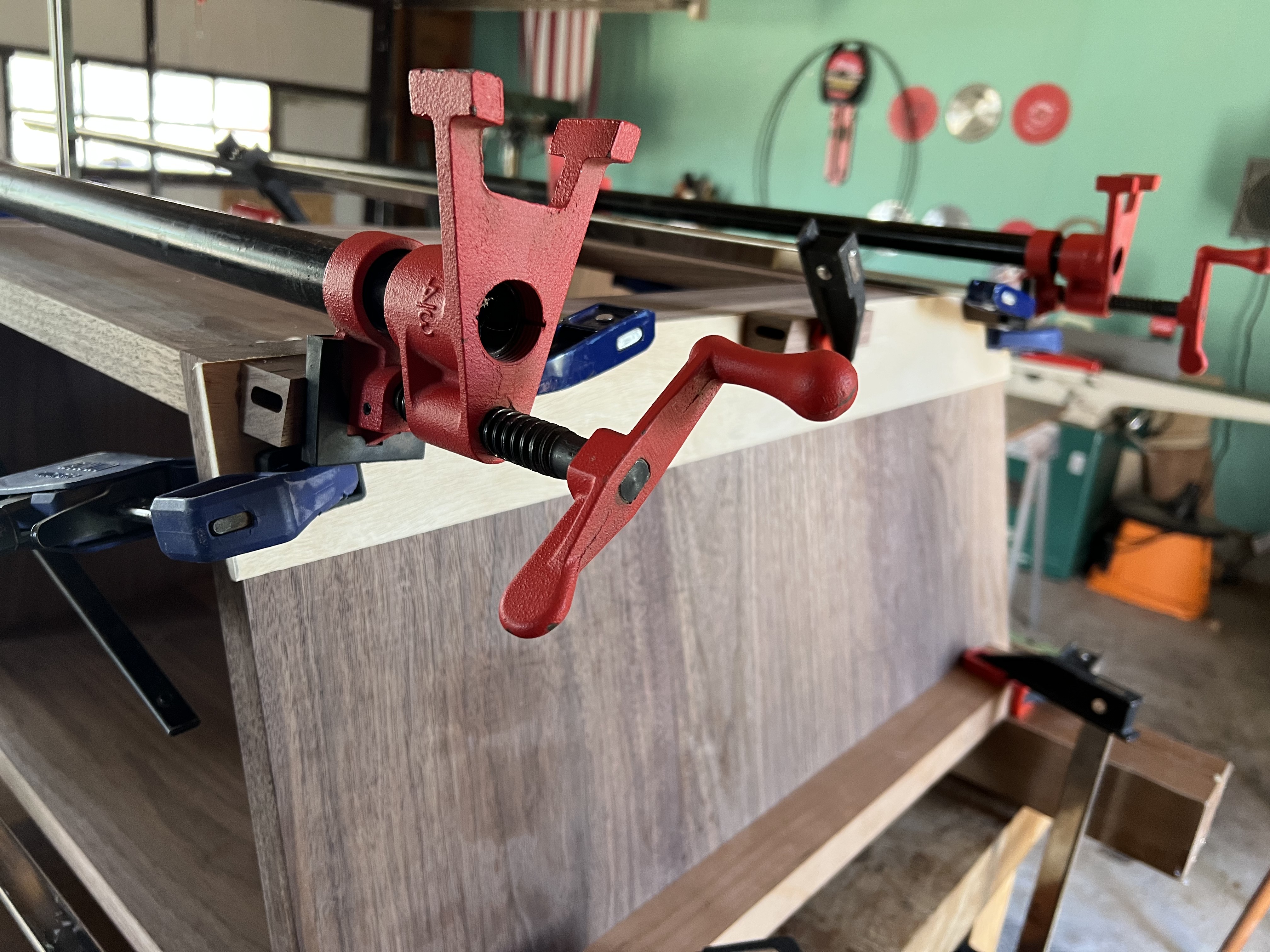
The walnut boards were milled flat and square, then joined into panels with grain continuity in mind. The case complicated by the trapezoidal shape.
Dovetail Case Frame
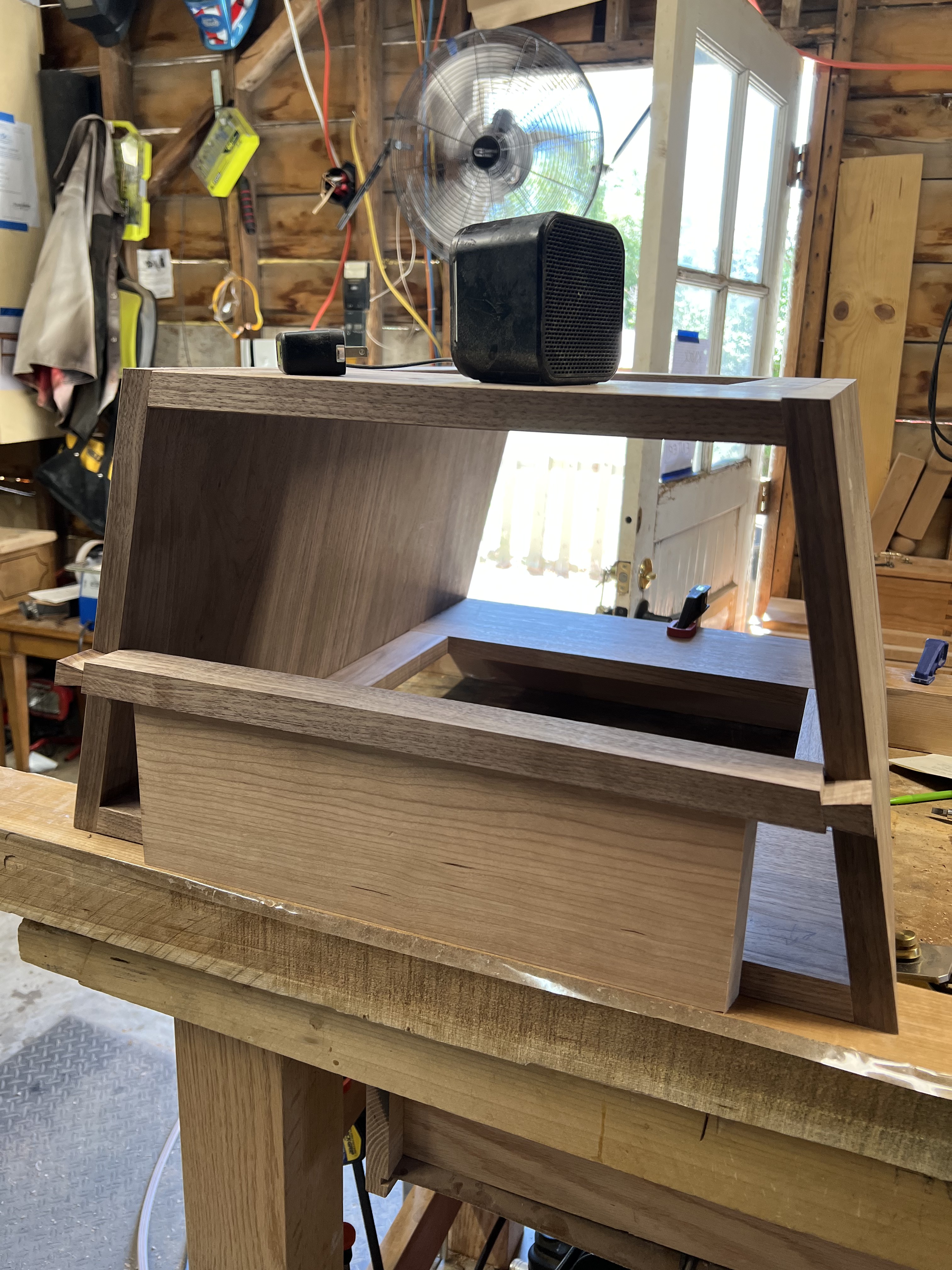


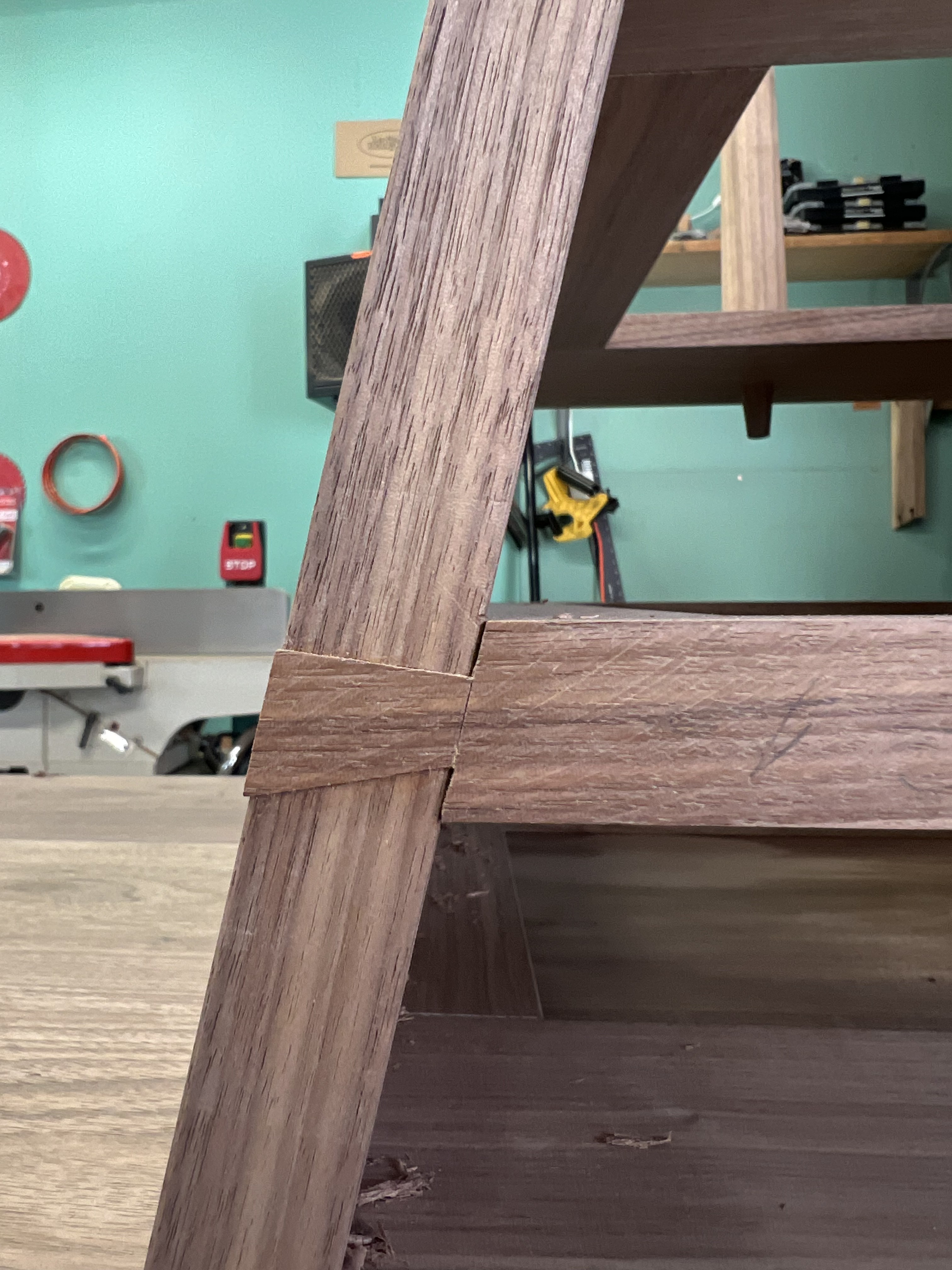
I really enjoy these dovetailed drawer frames because not only are they very functional in keeping the piece together, but they also are quite aesthetically pleasing when appropriate. I thought the natural angles of the desk would work well with the visible dovetailed frame on the case.
Technical Woodworking Notes:
This is one of those moments where you can't let the fear of messing up a nice case keep you from progressing. I made four attempts at these dovetailed frame pieces before I got two that I considered square enough to trace and cut out of the case. There were a lot of moments like these while making this desk.Breadboard Ends & Top

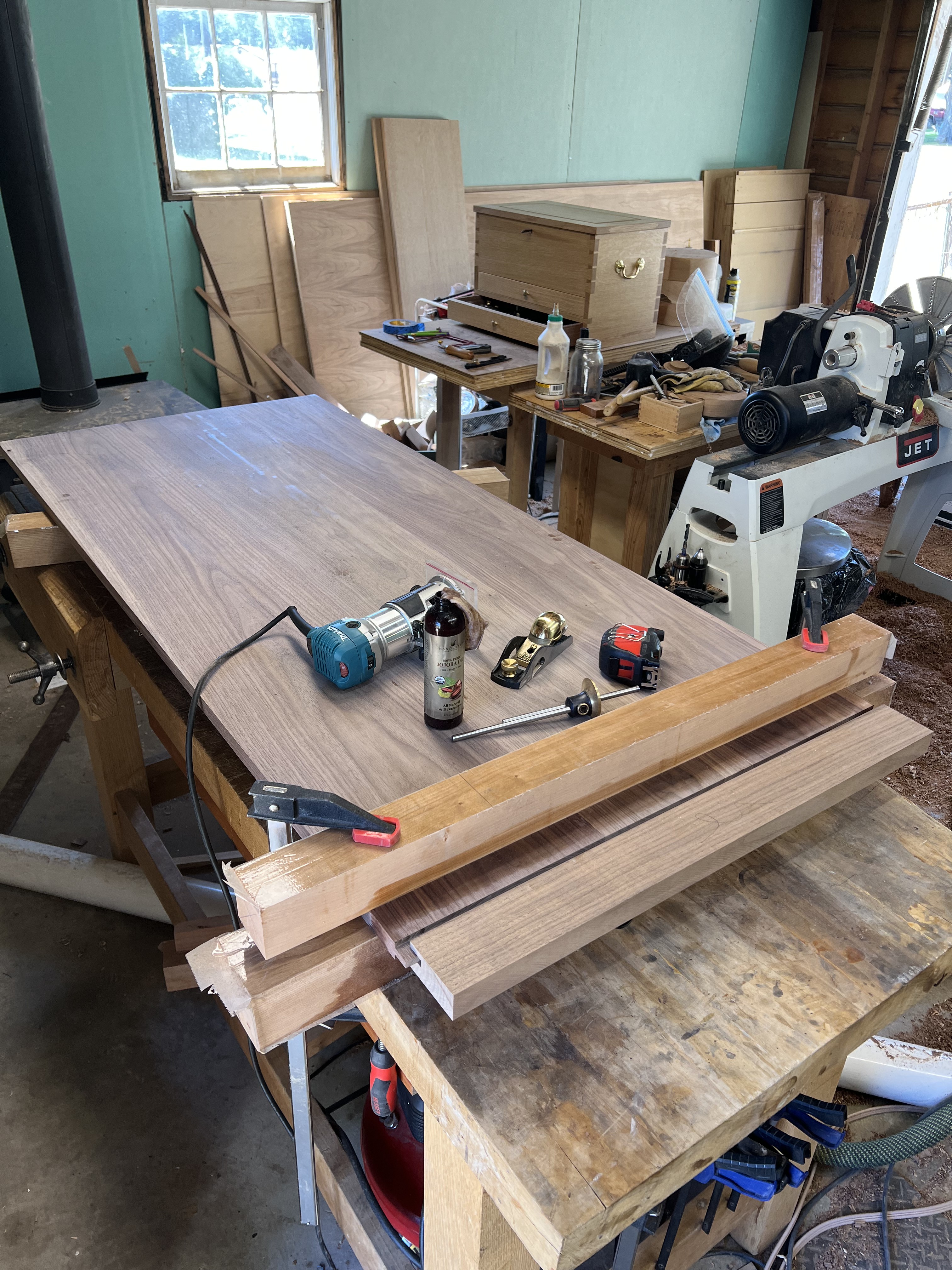
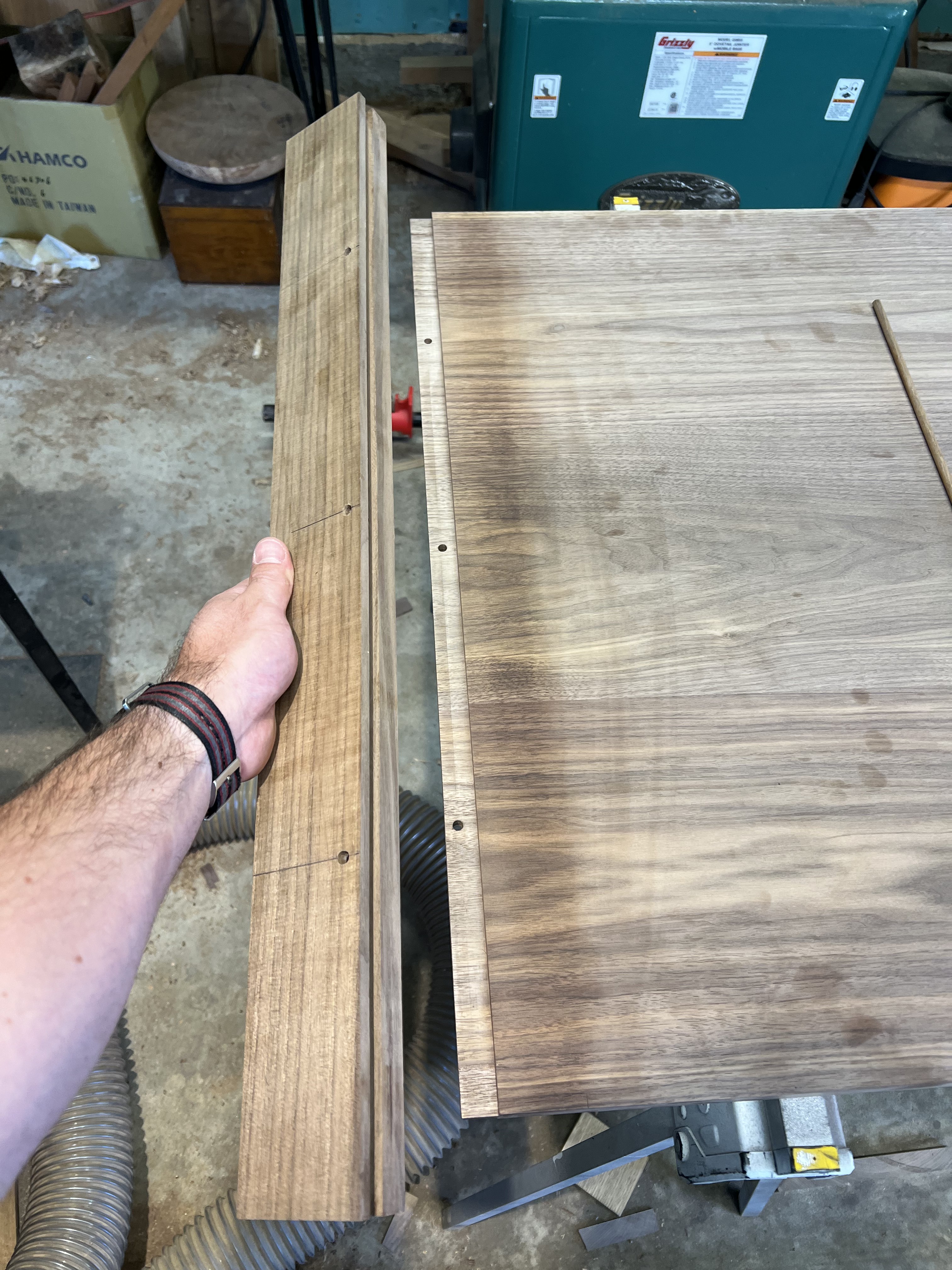
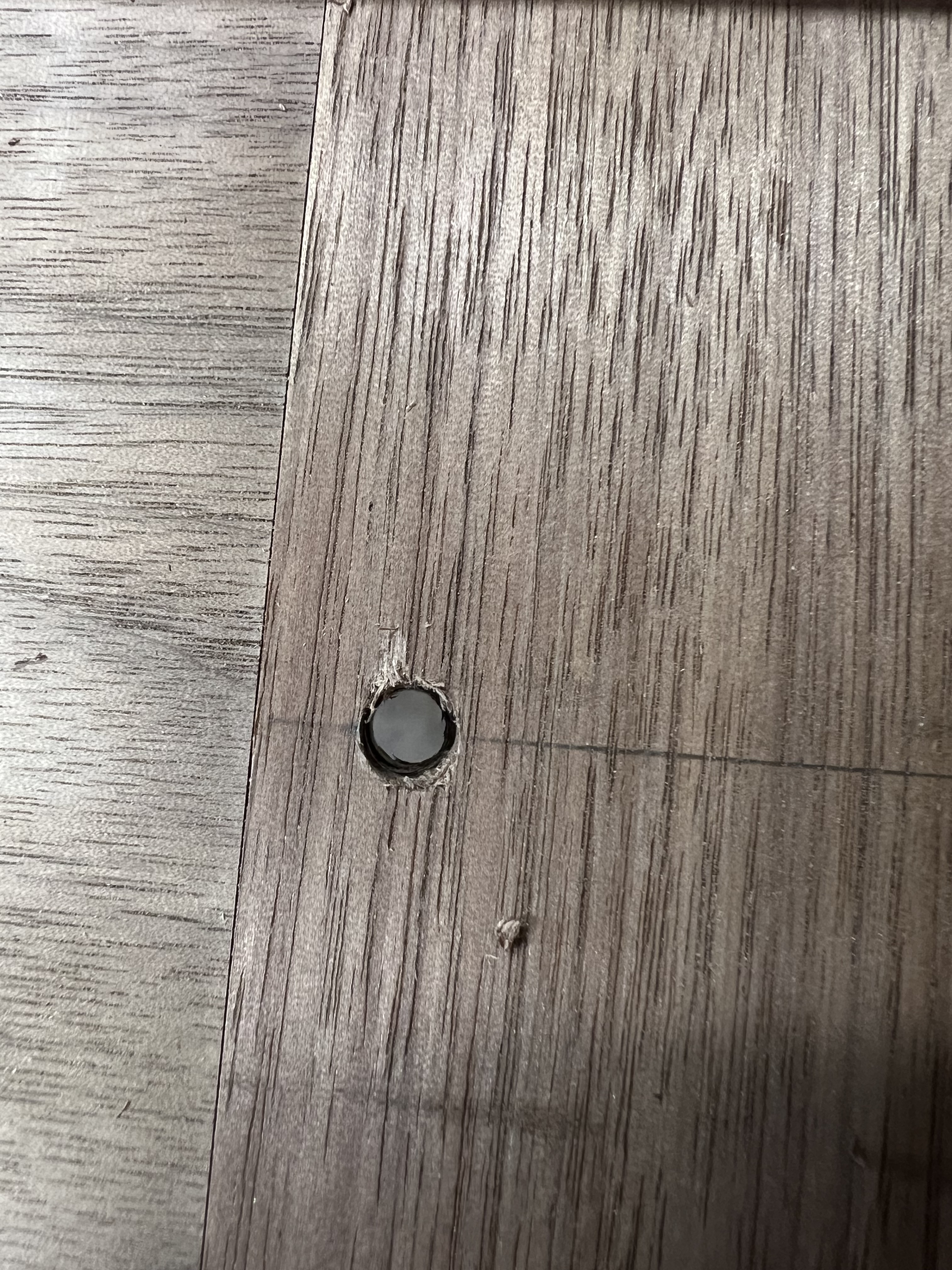
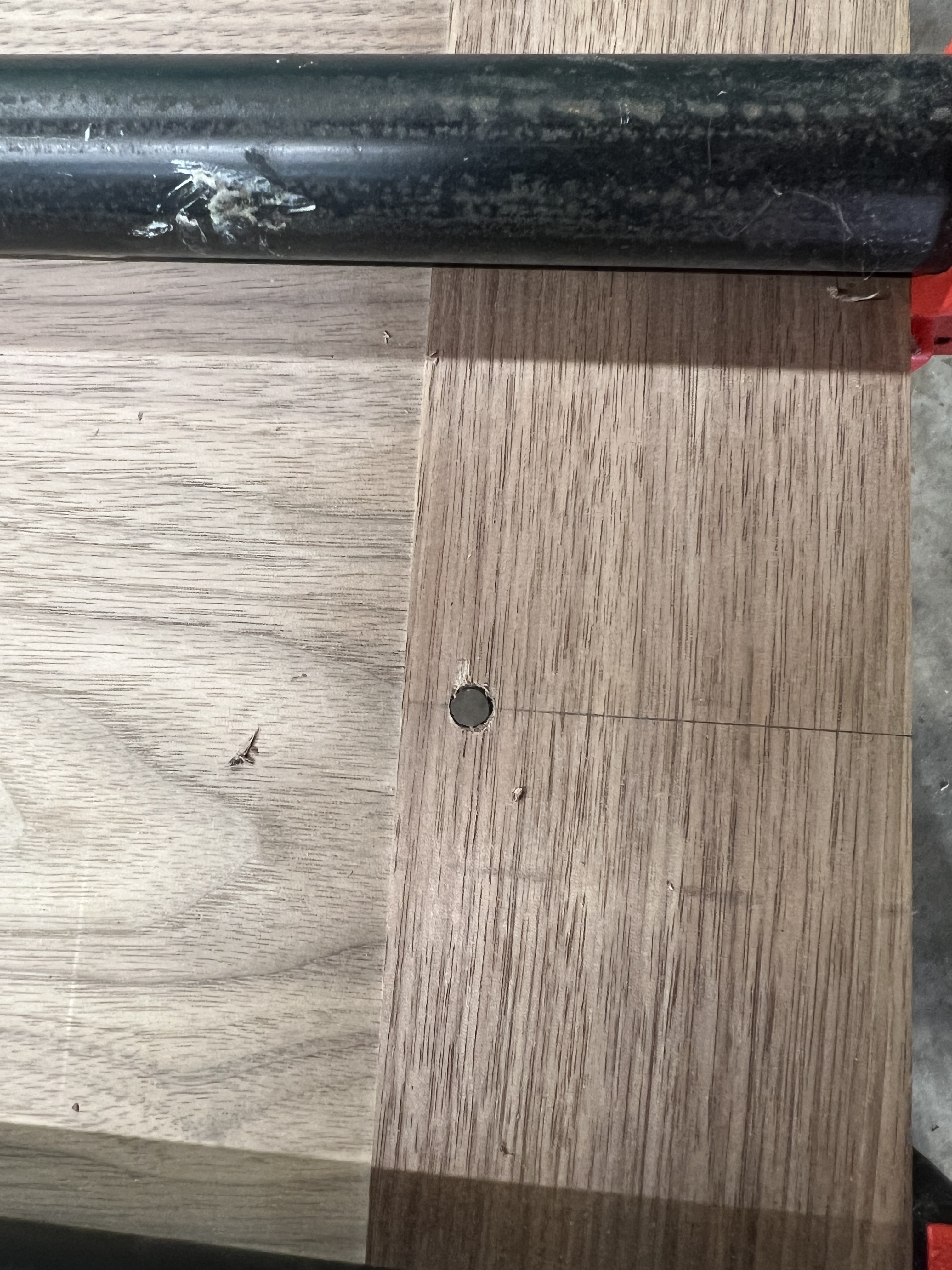
The desk top features breadboard ends with room for seasonal wood movement. Each joint was fit to slide snugly, ensuring the top remains flat.
Technical Woodworking Notes:
In the previous two photos, you can see the middle of the breadboard ends is bowed slightly creating a very small gap, so that without clamping pressure, the middle of the joint does not seat. With dowels to hold things tight, only the middle 4 inches of the breadboard ends are glued and clamped tight. The clamping pressure seats the middle of the joint, creating a "spring joint". Because of the bow in the middle, the edges of the breadboard ends will be forced tight into the tongue and groove without any glue.This is the only way to accomplish durable breadboard ends that actually allow a hardwood top to expand and contract. Throughout even just a single day in my shop, I would notice up to a 1/32" of movement across the solid, 28" kiln-dried top.
Legs & Mortise and Tenon Joinery

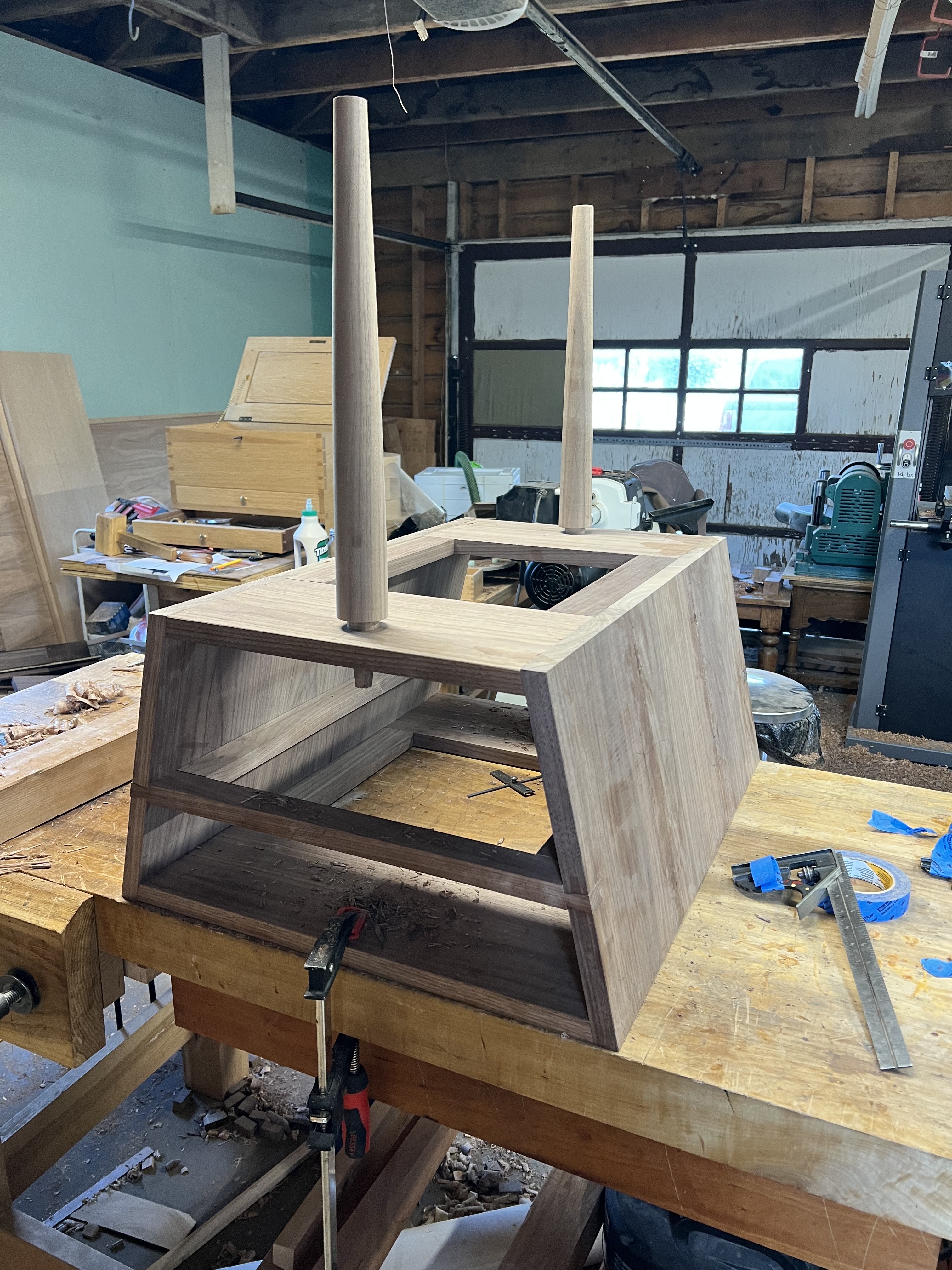

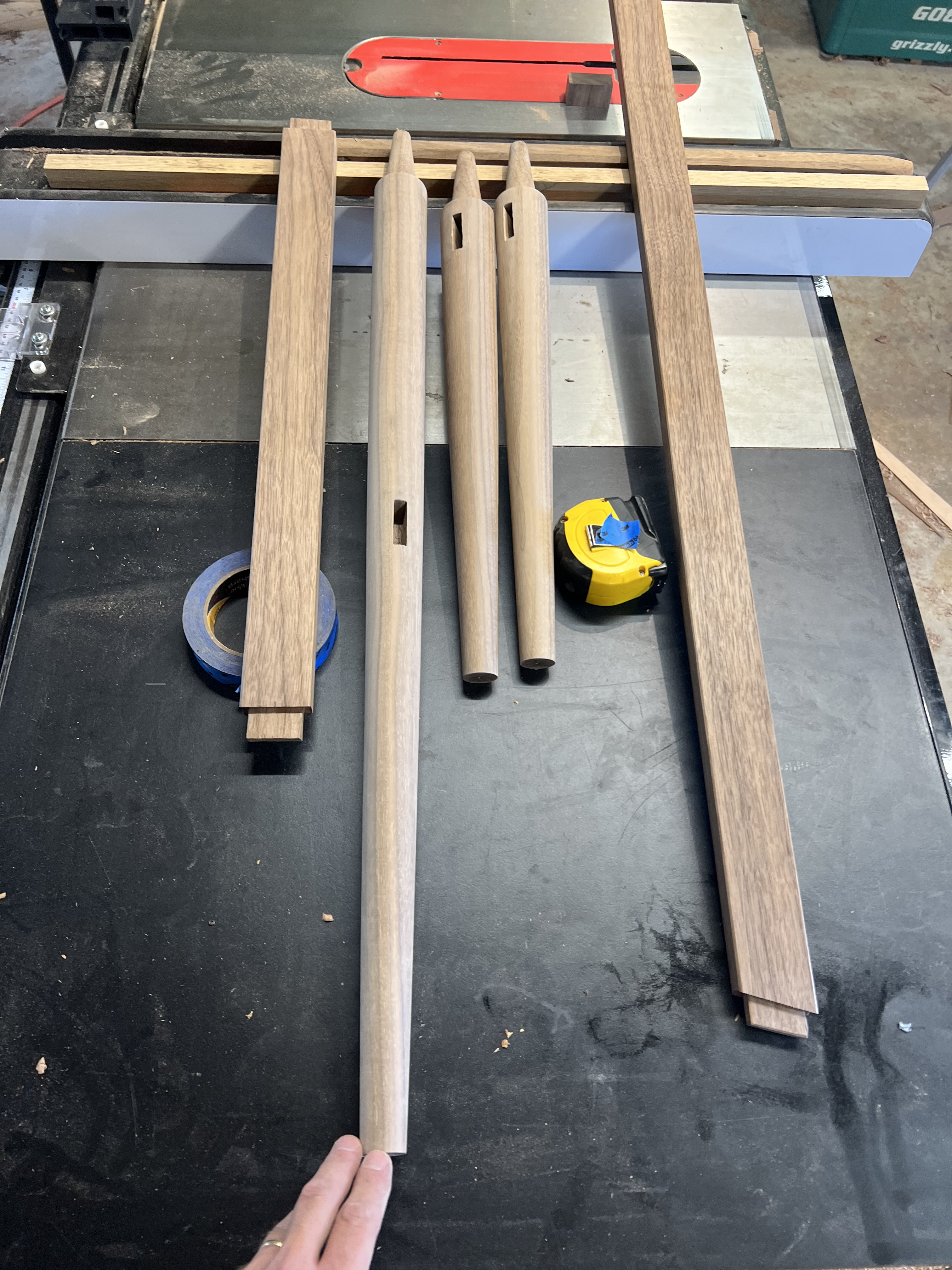
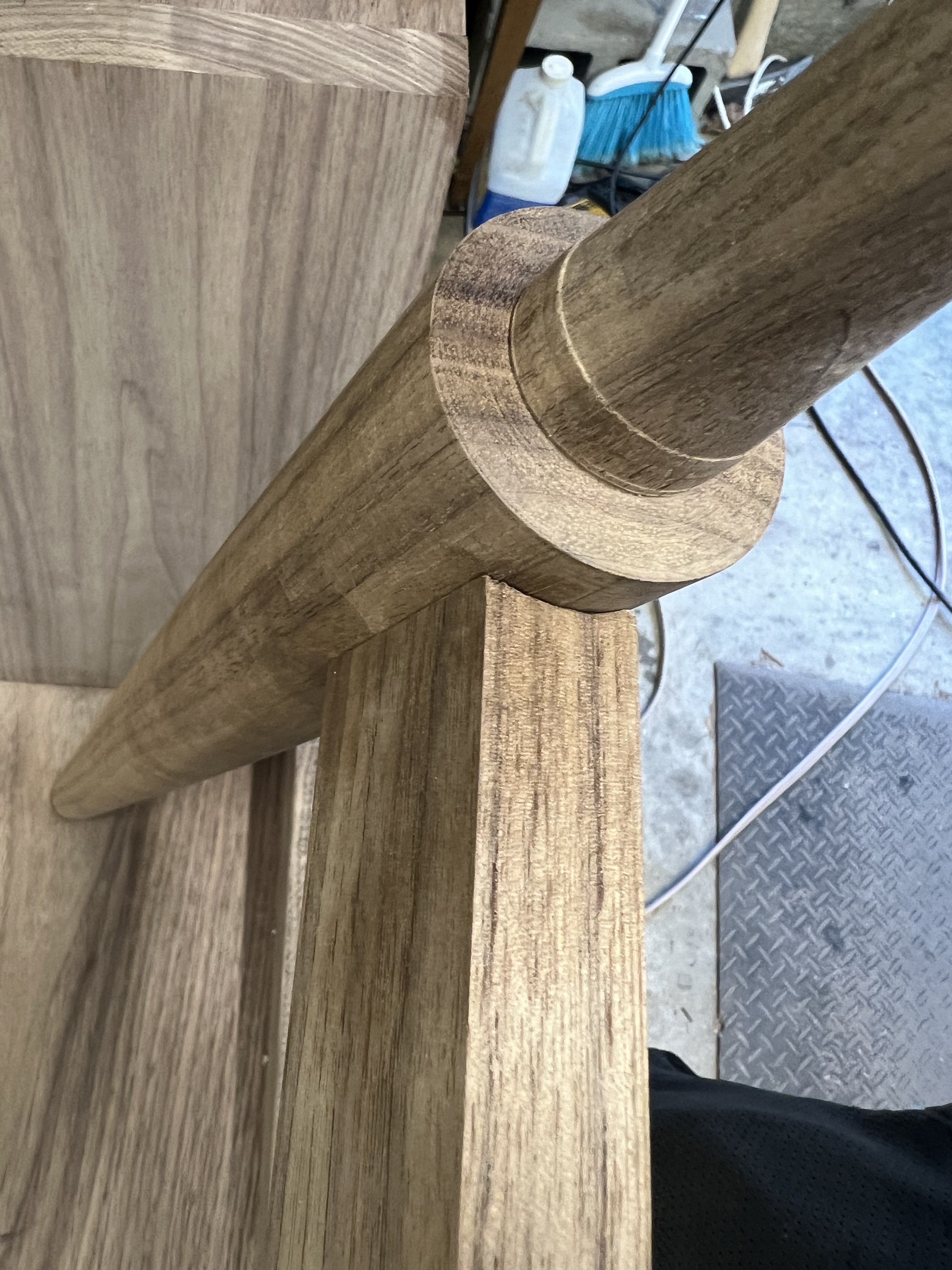
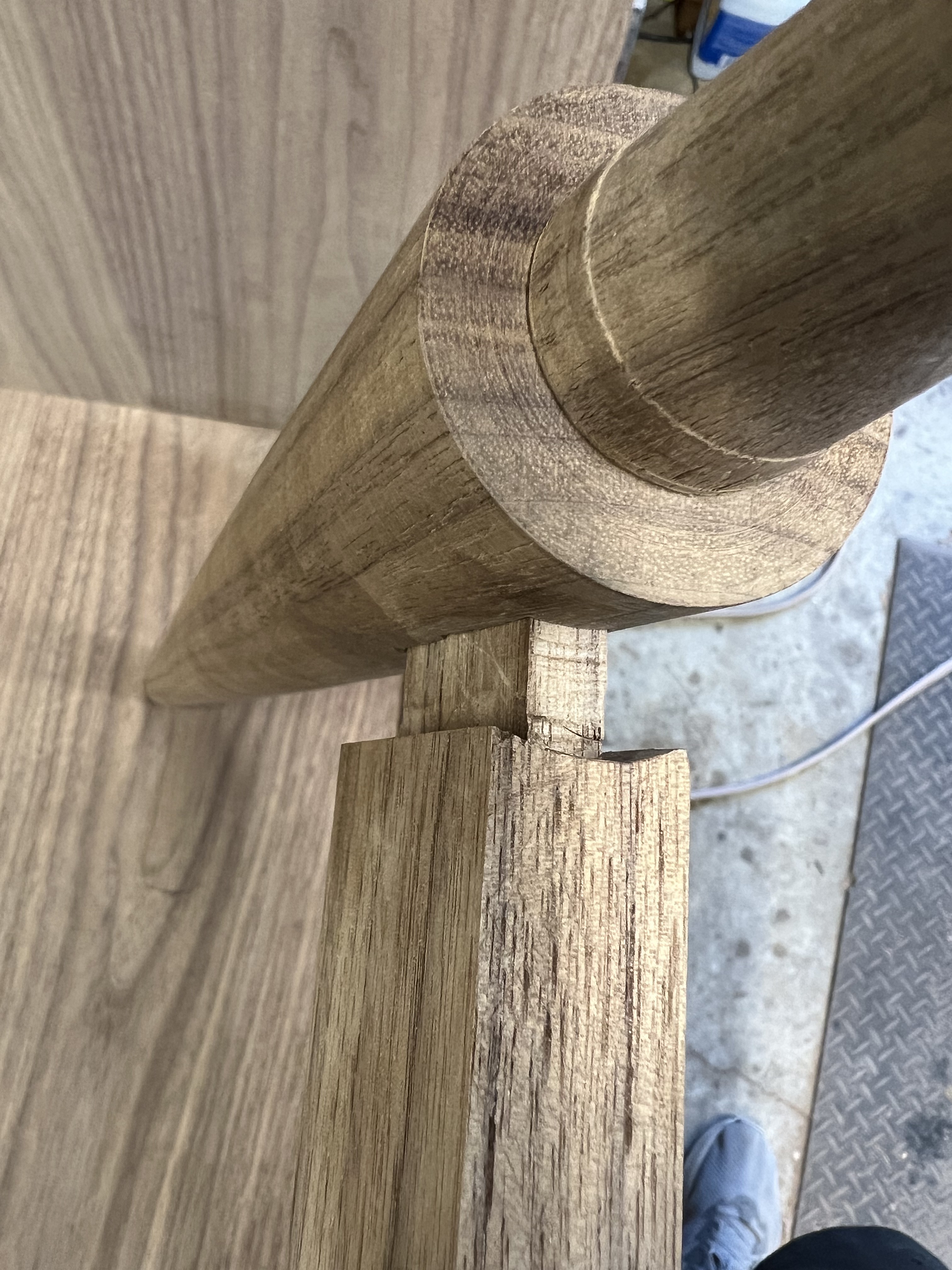
The legs are turned and tapered, joined to the aprons with round, tapered mortise and tenon joints — the kind you’d expect in a chair for maximum strength. The tenon shoulders were hand-shaped with gouges to match the leg’s radius perfectly.
Assembly

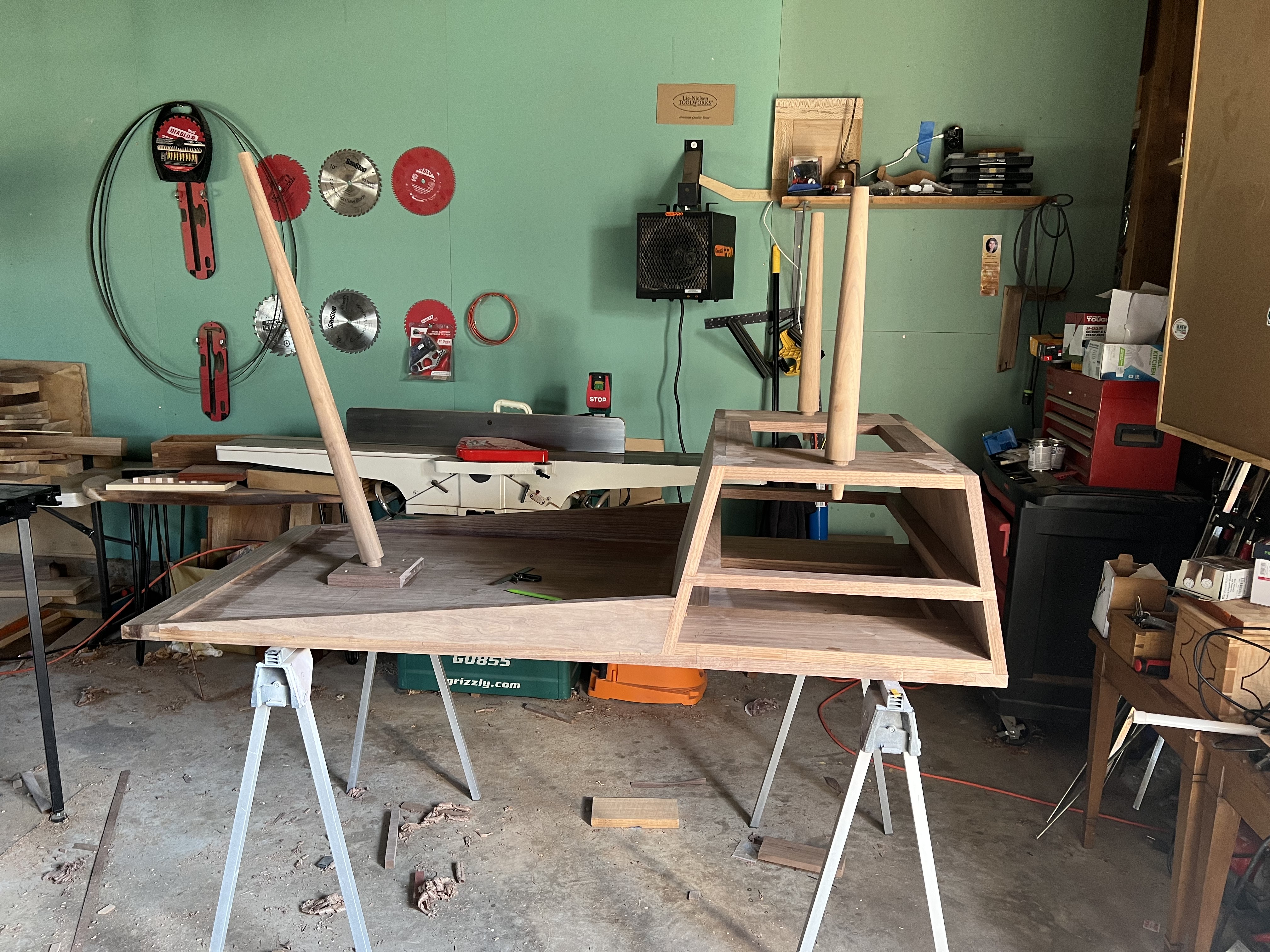
Once the leg assemblies were complete, the desk began to take its final shape. The geometry had to be flawless so the double-sided drawers operated smoothly.
Drawers
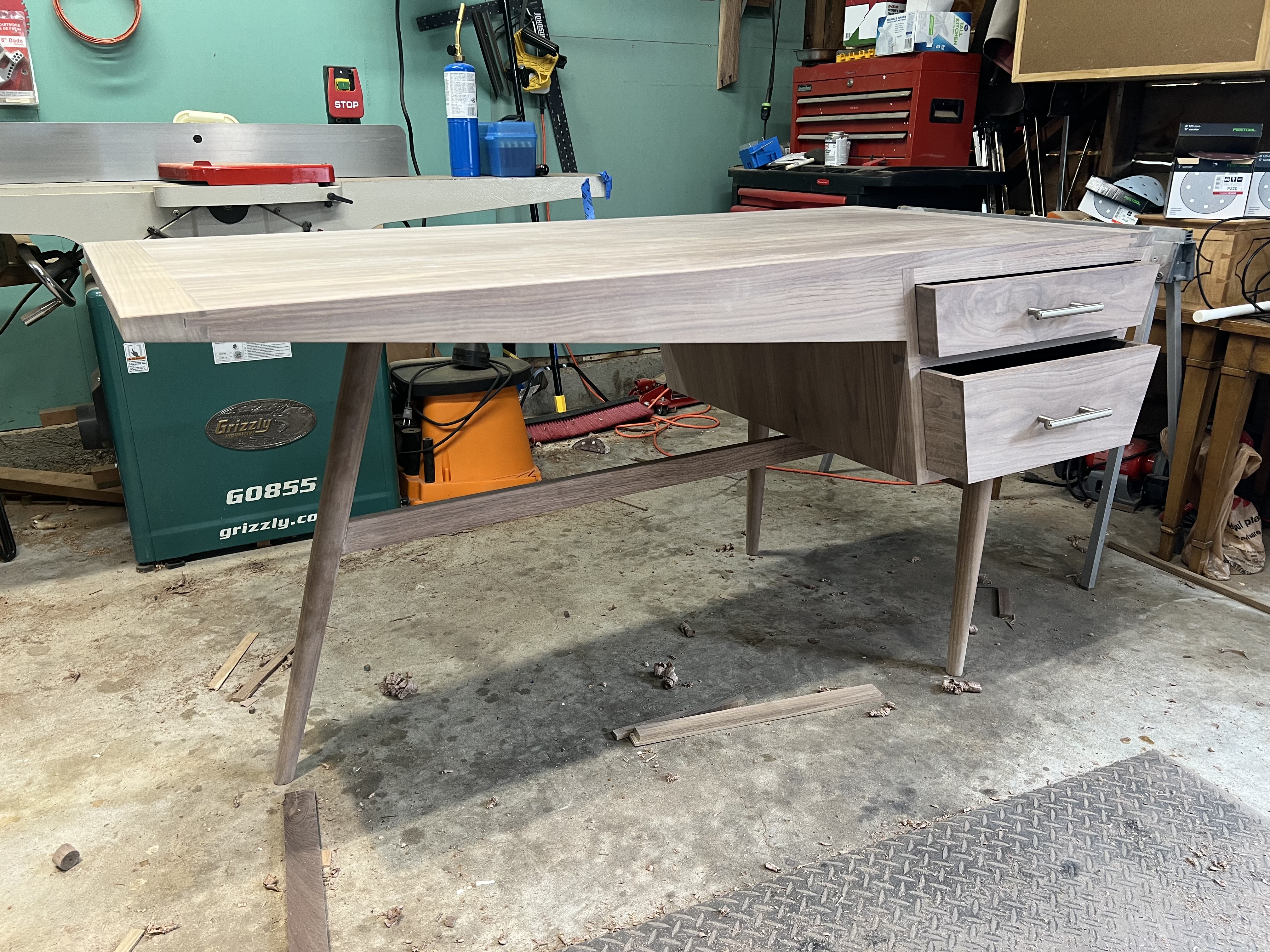
Dovetailing trapezoidal drawers was a first for me — similar to standard drawers, but with angled sides requiring perpendicular dovetail engagement. Precision layout was critical.
The drawers, accessible from both sides, were another exercise in precision. The dovetails needed to be tight yet allow for smooth travel in both directions.
Final Fit & Finish


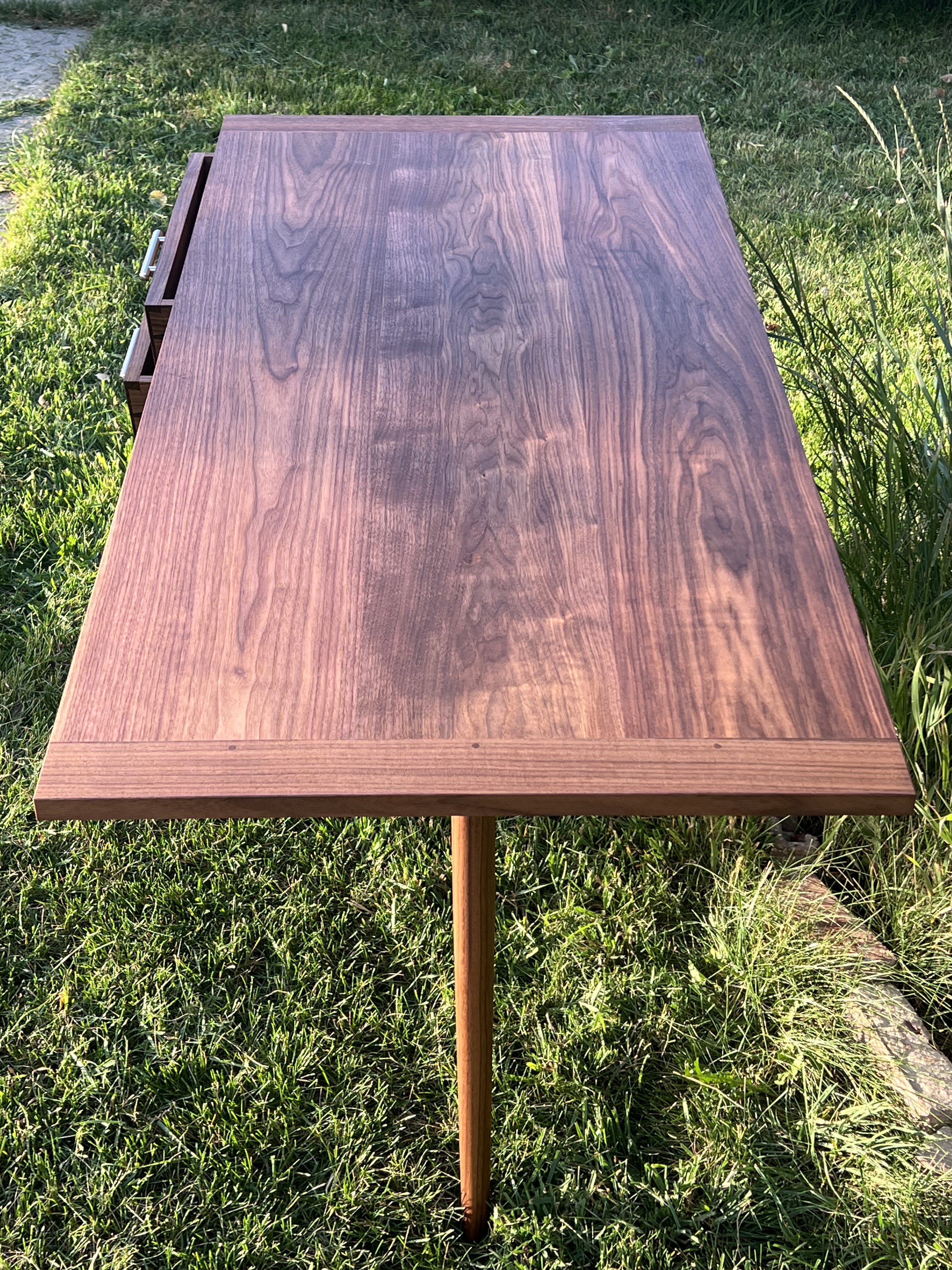
The desk was finished in Rubio Monocoat, enhancing the walnut’s warmth while keeping a natural matte feel. Every edge, joint, and curve was refined by hand.
Glamour Shots
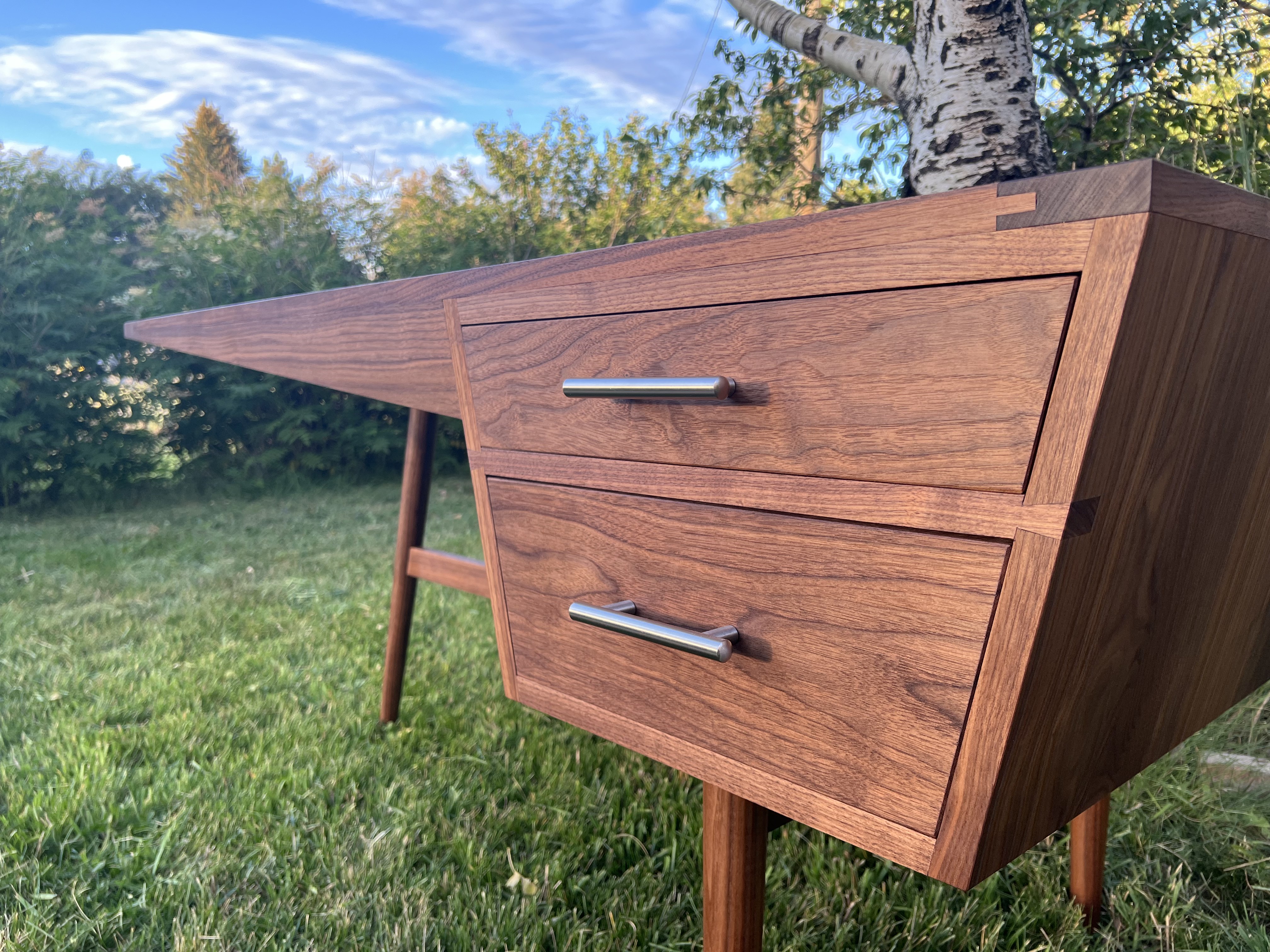


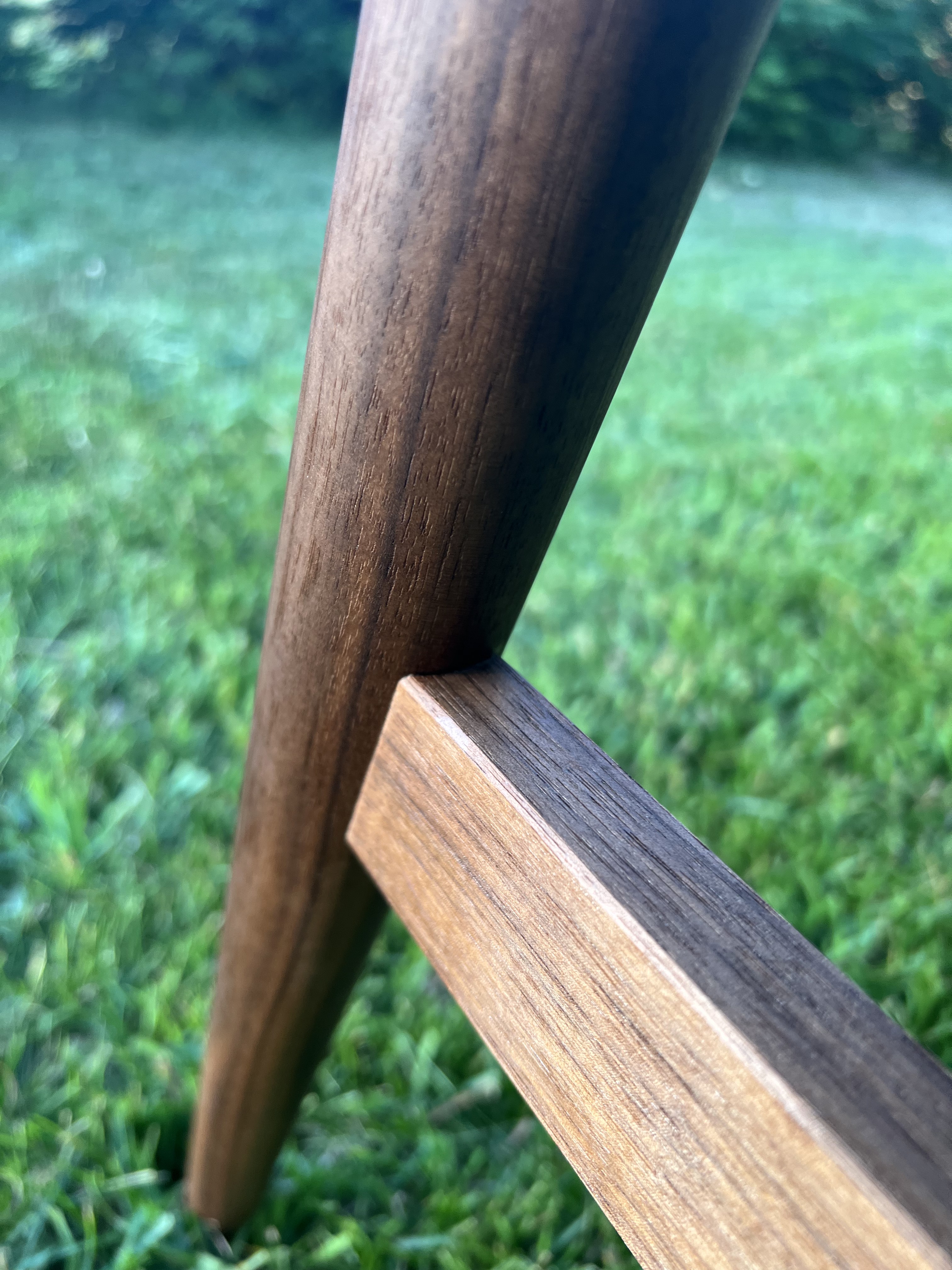
This Mid-Century Modern Desk is both a faithful re-creation and a technical challenge — a testament to the possibilities of solid wood joinery and precise craftsmanship.
Crafted with care by Frank Hucek. Completed in August 2025.
Disclaimer. This article was generated in part with AI tools. They allow me to accomplish more (like these blog posts) with my time.